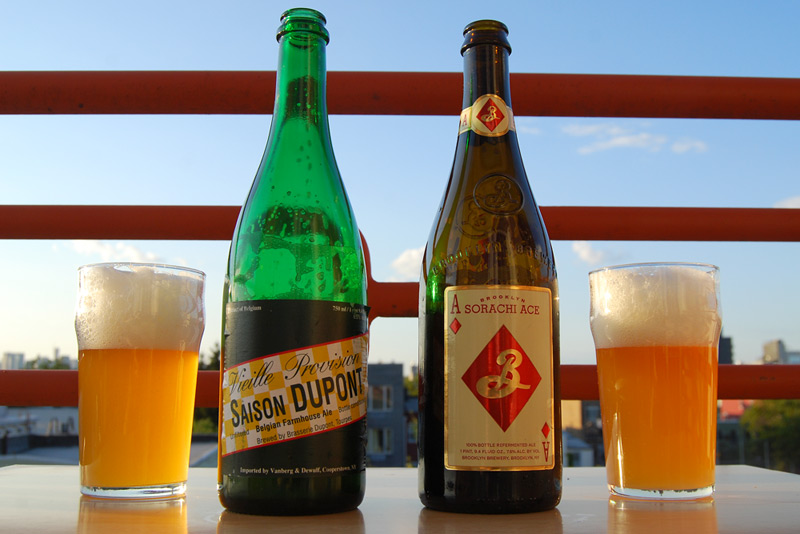Unfortunately, distance and schedule keeps most of us apart so we can't share many beers throughout the year. To combat this, we decided earlier this year, I believe over brews at Adams wedding, to take a stab at one of the latest craft beer phenomenon's: Collaboration. Brewing the same of very similar recipes on our individual setups around the country and seeing how they turn out. This is the first in our series of collaborative brews! Cheers.
The Brew: To start things off we wanted a style of beer that could really take on some individualized personality. The Belgian family of beers seemed perfect because of their inherent individuality even amongst the same style. This beer is our take on a Belgian Dubble and seeks to provide the appropriate balance between moderate alcohol warmth, richness, and superior drink-ability or "digestible" as the Belgians might say. The grain bill may seem involved, but at the end of the say the signature ingredients are the yeast choice and Dark Candi Sugar. Minor variations in fermentation characteristics such as temperature or yeast strain will likely produce nuanced variations on the same theme.
Some tasting notes: A remarkable clean fermenting Belgian with reddish-ruby highlights and low to moderate yeast fruity esters that possess a pleasant but distinct banana quality. The rich quality of caramel and plum undertones is coupled with round notes of toasty bread and biscuit and concluded with a slight dryness.
Check out the great book Brew like a Monk for more information on Belgian breweries and their wonderful history and beers.
Ingredients:
Malt (148-150F; Filtered Water w/ 1/4tsp CaCl2,CaSO4 per 5gl):
- 11# American 2-Row (Great Western)
- 1# Belgian Aromatic
- 1# Belgian Biscuit
- 0.5# Briess Crystal 40
- 0.25# Briess Crystal 135-165
- 0.15# German Carafa II
- 2oz. Liberty 4.9%AA 60min
Yeast: WhiteLabs WLP500 Trappist (Source: Chimay) (68F allowed to free rise)
Specs: 1.064 O.G., 7.2%abv, 28 IBU









